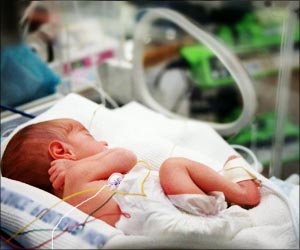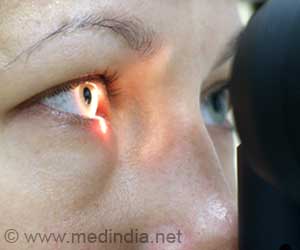AI breakthrough in detecting the leading cause of childhood blindness.
- Retinopathy of prematurity (ROP) is a common condition affecting premature babies that can cause blindness if left untreated
- A team of international scientists and clinicians developed a deep-learning AI model to identify at-risk infants with ROP
- The AI tool could improve access to care in underserved areas and prevent blindness in thousands of newborns worldwide
Development and international validation of custom-engineered and code-free deep-learning models for detection of plus disease in retinopathy of prematurity: a retrospective study
Go to source). The study, by an international team of scientists and clinicians in the UK, Brazil, Egypt, and the US, supported by the National Institute for Health and Care Research (NIHR) Biomedical Research Centre at Moorfields Eye Hospital NHS Foundation Trust and the UCL Institute of Ophthalmology, is published in The Lancet Digital Health.
Dr. Konstantinos Balaskas (Director, Moorfields Ophthalmic Reading Centre & Clinical AI Lab, Moorfields Eye Hospital and Associate Professor, UCL Institute of Ophthalmology) said, "Retinopathy of prematurity is becoming increasingly common as premature baby survival rates improve around the world, and it is now the leading cause of childhood blindness in middle-income countries and the United States."
Prevalence of Retinopathy of Prematurity
"As many as 30% of newborns in Sub-Saharan Africa have ROP, and while treatments are now widely available, it can cause blindness if not detected and treated promptly." This is frequently due to a shortage of eye care specialists; nonetheless, while ROP is visible and treated, no child should become blind from it."As the condition becomes more common, many areas do not have enough trained ophthalmologists to screen all at-risk children; we hope that our technique to automate ROP diagnostics will improve access to care in underserved areas and prevent blindness in thousands of newborns worldwide."
ROP is a syndrome that primarily affects preterm babies and is characterized by the formation of aberrant blood vessels in the retina, the thin layer of nerve cells at the back of the eye that turns light into signals that the brain can identify. These blood vessels can leak or bleed, causing retinal damage and possibly retinal detachment. While milder forms of ROP require only monitoring and do not require treatment, more severe cases require immediate treatment. It is estimated that 50,000 children worldwide are blind as a result of it.
What the Naked Eye Misses, AI Catches
ROP symptoms cannot be detected with the naked eye, so the only way to discover the illness is to monitor at-risk infants with eye exams. Without the necessary infrastructure for comprehensive prenatal and postnatal care, the critical window for screening and treatment may be missed, resulting in preventable blindness.The UCL-Moorfields team created a deep learning AI model to screen for ROP that was trained on a sample of 7,414 photographs of the eyes of 1,370 newborns admitted to London's Homerton Hospital and evaluated for ROP by ophthalmologists.
The hospital serves an ethnically and socioeconomically varied community, which is significant because ROP varies across ethnic groups; therefore, the tool was designed to work safely across ethnic groups, guaranteeing that everyone may benefit.
The researchers validated their method further by using it on datasets from the United States, Brazil, and Egypt.
"Our findings justify the continued investigation of AI tools to screen for ROP," said first author Dr.Siegfried Wagner (UCL Institute of Ophthalmology and Moorfields Eye Hospital). We are now verifying our tool in different hospitals across the UK to discover how people interact with the AI's outputs and how we might implement the technology in real-world clinical situations. We hope that the tool will allow a trained nurse to take photos that can be analyzed by the AI tool, allowing for treatment referrals to be made without the requirement for an ophthalmologist to manually review the scans.”
"AI tools are particularly useful in ophthalmology, a field that is heavily reliant on the manual interpretation and analysis of scans for detection and monitoring. Here we have found further evidence that AI can be a game-changer for the field and open up access to sight-saving treatments."
Reference:
- Development and international validation of custom-engineered and code-free deep-learning models for detection of plus disease in retinopathy of prematurity: a retrospective study - (https://www.thelancet.com/journals/landig/article/PIIS2589-7500(23)00050-X/fulltext)
Source-Medindia
















